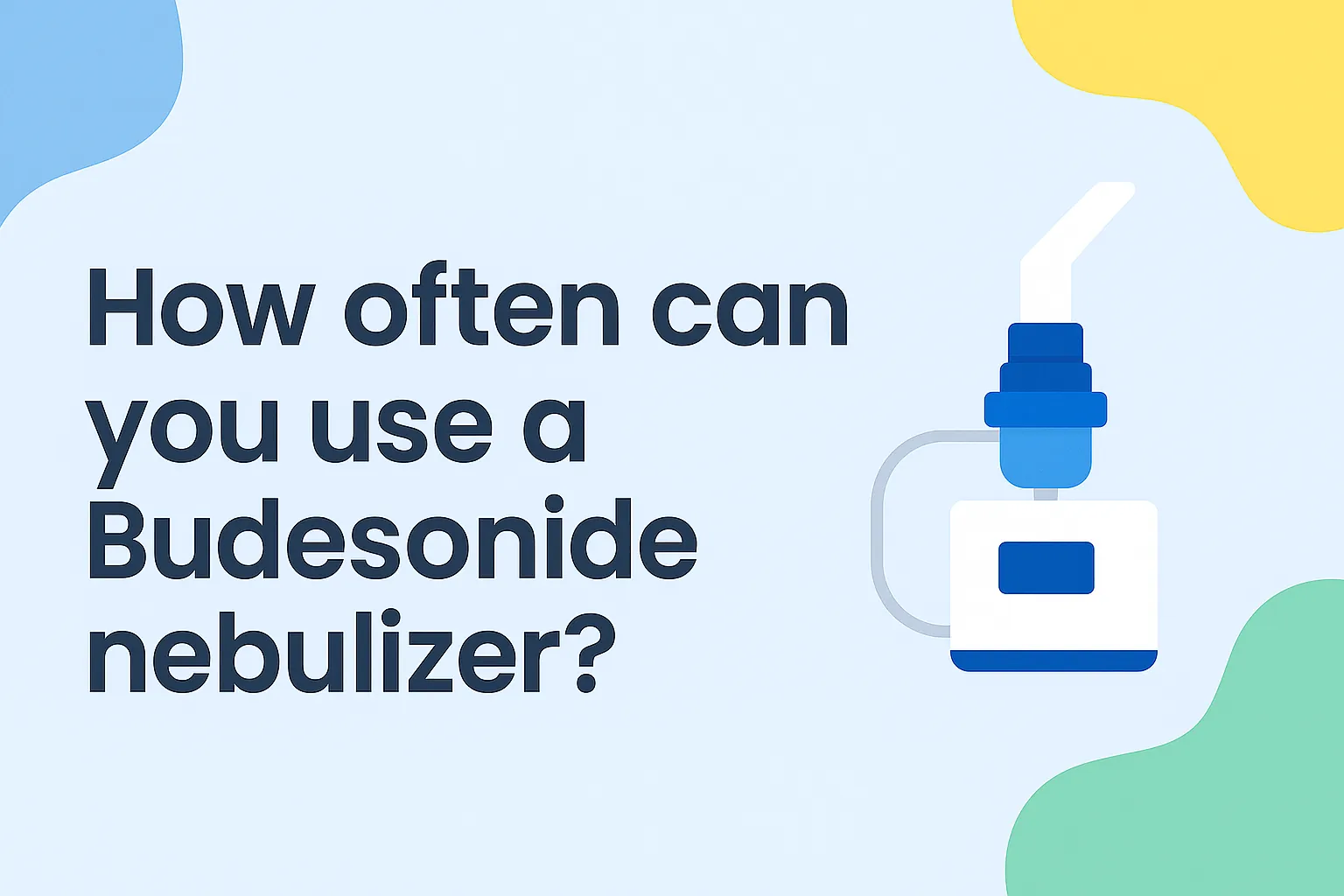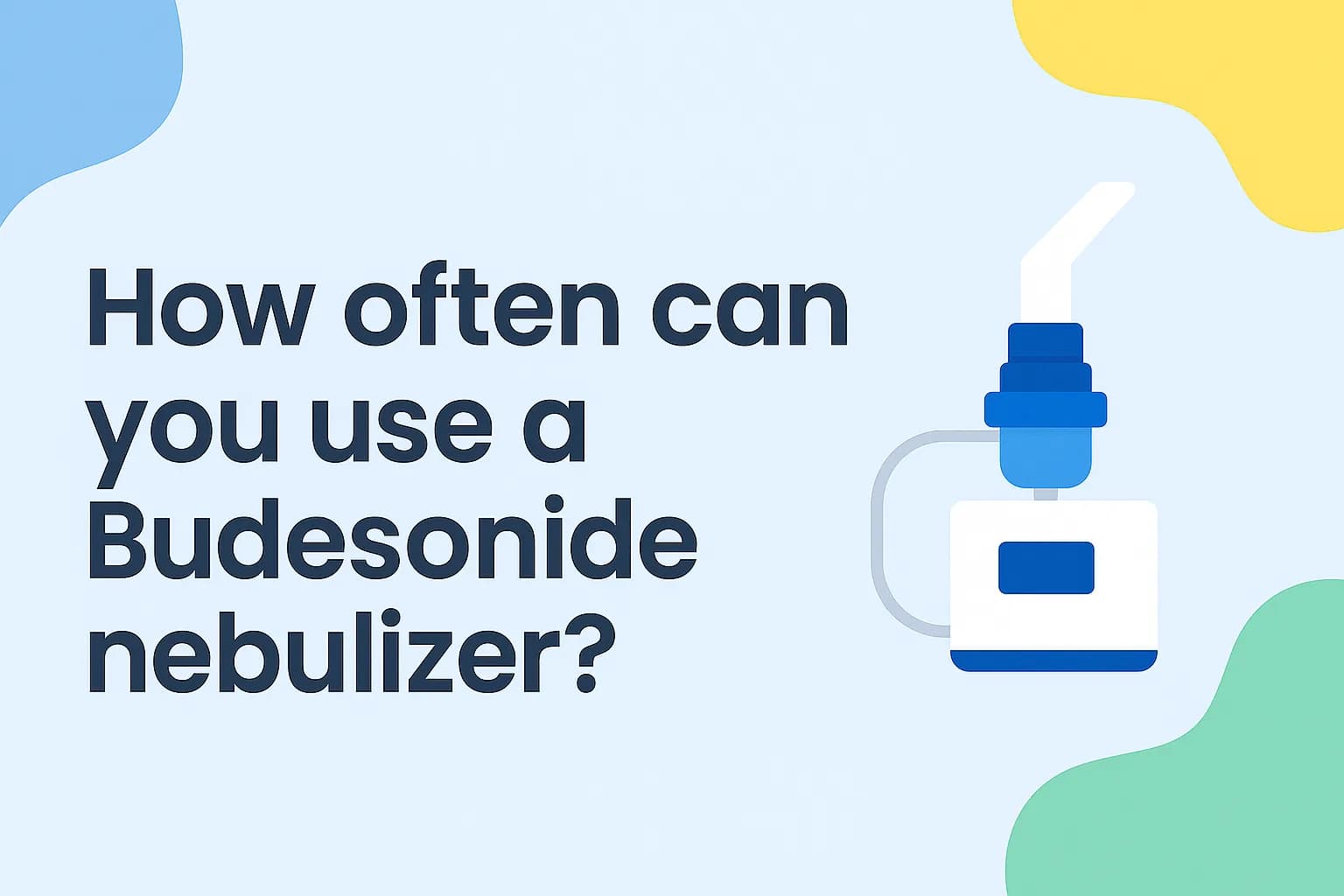How often can you use a Budesonide nebulizer?

Pulmicort Respules (budesonide inhalation suspension) is a brand-name corticosteroid used to prevent and manage asthma symptoms in children 12 months to 8 years old, and sometimes for COPD. The liquid is breathed into the lungs via a jet nebulizer. Dosing is typically once or twice daily, based on prior therapy and any concurrent bronchodilator use (for example, albuterol). Your healthcare provider will tell you exactly how often to use it.
How to use budesonide suspension (Pulmicort Respules)
- Keep each dose in its sealed foil envelope until ready to use. Write the date you open the envelope on the back.
- Open the envelope and remove one single‑dose ampule.
- Shake the ampule gently in a circular motion.
- Hold upright, twist off the top, and empty the contents into the nebulizer cup. Do not mix with other medications or use an ultrasonic nebulizer.
- Turn on the nebulizer compressor to create a fine mist. Breathe normally through the mouthpiece or mask until the dose is finished.
- After treatment, rinse the mouth (or child’s mouth) without swallowing and wash the face to prevent irritation or thrush.
How does budesonide nebulizer work?
Budesonide suspension is an inhaled corticosteroid. It reduces inflammation in the airways to prevent asthma symptoms. Other corticosteroids in this class include prednisone, methylprednisolone, and prednisolone (oral forms).
What is budesonide nebulizer used for?
Budesonide suspension (generic of Pulmicort Respules) treats moderate to severe asthma symptoms in pediatric patients and may also be used in COPD management.
Side effects of budesonide
Common (inhaler/nebulizer solution)
- Cold symptoms (stuffy/runny nose, sore throat, cough)
- Viral upper respiratory tract infection
- Nausea
- Stomach virus
Less serious side effects
- Middle ear infection
- Oral thrush
Rare but serious side effects
- Severe allergic reaction (hives, facial/tongue/throat swelling, shortness of breath). Seek emergency care immediately.
- Hormone changes (long‑term/high‑dose use mimics excess cortisol: weight gain, “moon face,” upper back swelling; abrupt stop can cause low‑cortisol symptoms: nausea, appetite loss, weakness, diarrhea).
- Vision changes (increased eye pressure, worsened glaucoma, cataracts). Report blurry vision or eye discomfort immediately.
- Infection risk (weakened immunity). Avoid sick contacts; seek care for fever, chills, cough, or breathing difficulty.
- Worsening of other conditions (diabetes, high blood pressure, osteoporosis, glaucoma, stomach ulcers). Monitoring may be needed.
- Delayed growth in children. Use lowest effective dose for shortest time; discuss concerns with a healthcare provider.
Contact a healthcare professional for any adverse effects. Read the Medication Guide each refill. Report side effects to the FDA at 1‑800‑FDA‑1088 or www.fda.gov/medwatch.
Drug interactions
Budesonide may interact with other drugs or supplements. Tell your provider about all you take, including:
- Antacids
- HIV/hepatitis protease inhibitors
- Erythromycin, clarithromycin
- Ketoconazole, itraconazole
- Cyclosporine
- Cimetidine
- Grapefruit juice
This list may not be complete.
Before using budesonide suspension
Do not use if allergic to budesonide or inactive ingredients. Do not use inhalation powder if allergic to milk proteins. Inhalers are not for asthma attacks; keep a short‑acting inhaler on hand.
Tell your provider if you have:
- Diabetes
- Active infection or TB exposure
- Herpes eye infection
- History of chicken pox or measles
- Stomach ulcers
- Liver disease
- Glaucoma or cataracts
- Osteoporosis
- High blood pressure
- Adrenal insufficiency
- Scheduled surgery
- Pregnancy or plans to become pregnant
- Breastfeeding or plans to breastfeed
Storage
Store upright at 68–77 °F (20–25 °C), protected from light. Use opened ampules immediately; unopened ones in the envelope within 2 weeks.
Missed dose
If you miss a dose, skip it and give the next dose at the scheduled time. Do not exceed the prescribed frequency.
Related Medications
- Pulmicort Flexhaler (budesonide)
- Rhinocort AQ Nasal Spray (budesonide)
- Pulmicort Respules (budesonide)
- Symbicort Inhaler (budesonide/formoterol)
- Flovent HFA (fluticasone propionate)
- Duoneb (ipratropium/albuterol)
Sources
- Budesonide inhaled (Rx). Medscape. Accessed Aug. 9, 2024.
- Budesonide (Rx). Medscape. Accessed Aug. 9, 2024.
- Pulmicort Respules – budesonide suspension. DailyMed. Accessed Aug. 9, 2024.
- Pulmicort Respules. Medical Professionals Reference. Accessed Aug. 9, 2024.





